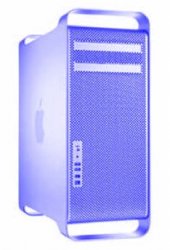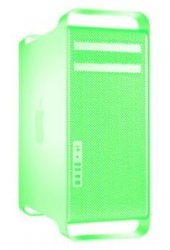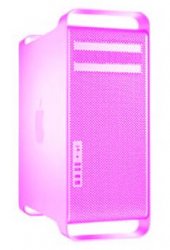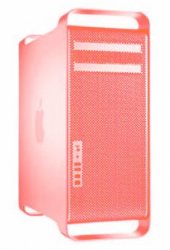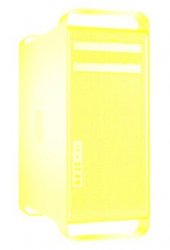Speaking of which, in what ways do you think the case could change assuming it might need to cool these ~300W cards. Also, do you think the Mac Pro will expand to 12/16 DIMM slots to make higher memory configuration more easily possible with 16/32 GB DIMMS?
12/16 DIMM slots probably aren't coming. May get 8/16 DIMMs slots. I suspect though Apple is just going to bet on memory density increasing over the new basic case design lifetime. [ If come with a new case it will be the same basic design for next 5-8 years. If Xeon E5's moving to DDR4 then bulking up on "cheap" DIMMs is going to be a thing of the past; not future. ]
If limited to just one case for the whole Mac Pro line up and keeping the "CPU/RAM" daughter-card to maximize overlap then:
In short, move all persistent storage to top thermal zone and increase air flow through the middle "PCI-e card" zone.
1. In top thermal zone. only one 'multipurpose' bay. A cage that either holds ODD or front facing, lockable drive sled. (or USM socket ). Nominally this is empty.
2. Four 2.5" drives in the former lower ODD bay area
3. move front I/O sockets panel to old lower ODD bay location and rotate horizontal. Smaller additional intake fan also in this new area.
4. Widen (in horiz orientation) the main motherboard a place a bigger gap between PCI-e sockets.
5. Larger diameter "PCI-e card" zone fan with internal facing baffles changed to new slot spacing. (diameter extends up into vacated drive sled area. Also may need to tweak case width slightly for new fan so have clearance for removable side panel.). Alternatively, two, side-by-side ingest fans in front of cards (again one of which extending into vacated drive sled area ). Each fan for just 2 slots.
6. on rear. move the latch up to upper half, so more airflow exits above cards in PCI-e card thermal zone. Minimally up enough so higher than the double spaced slot(s).
7. Make Mac Pro case 1-2" deeper (front to back) to support larger CPU/RAM card connector(s) and more widely spaced electronics. May also need to widen (side-to-side) case for this card about 0.3-0.6".
[ Not sure will fit in Apple's design constraints for "under/on standard desk" but to get to 8 DIMMs slots per socket would need to add around 5" to the depth. That would make the Mac Pro about 23" deep. That is not going to fit under some common desks. ]
8. Figure a way to make the handles on either end removable/detachable, so get back to standard rack width in horizontal orientation. ( don't impact cooling per se , but if much more noisy when fully packed can move to machine room. )
If they think Mac Pro can support two two different cases that largely overlap in design, but one just scaled smaller then:
Most of the above only would loose CPU/RAM daughter card so would have different sized motherboards.
A. Make the dual CPU socket case gets taller. Expand width of the CPU thermal zone so RAM paths are different than CPU paths. Add slight more width between PCI-e slots than above so that have at least 3 "double wides". [ probably wouldn't fit in standard rack in horizontal config and will be "deskside" boxes. Upside probably could possibly get the 16 DIMMs into the box.]
B. The single CPU socket case looses a PCI-e slot (or two if Thunderbolt present and need to add embedded GPU. ). Spacing on remaining 2-3 slots gets wider. [ probably can horizontal rack this. ]
Most hot running, double wide cards designs these days will ingest alot of air from the side and expel it out slots on the cards external facing edge. The challenge to get enough cool air to those ingest points. That means wider cards spacing. If move other significant heat sources (e.g, disks ) out of the PCI-e card zone and increase the airflow with larger diameter fan it should be OK without raising the noise decibel level too much. Apple's target levels are lower than most.
DDR4 DIMMs are going to start at 8GB. The standard line up will probably be 8GB , 16GB , and 32GB for first generation. 4 (or 8) 16GB modules is way above the current norms for a Mac Pro ( 64 and 128 ). 32GB are going to initially be out of price reach for most, but case design is oriented for the long term when those won't be.


